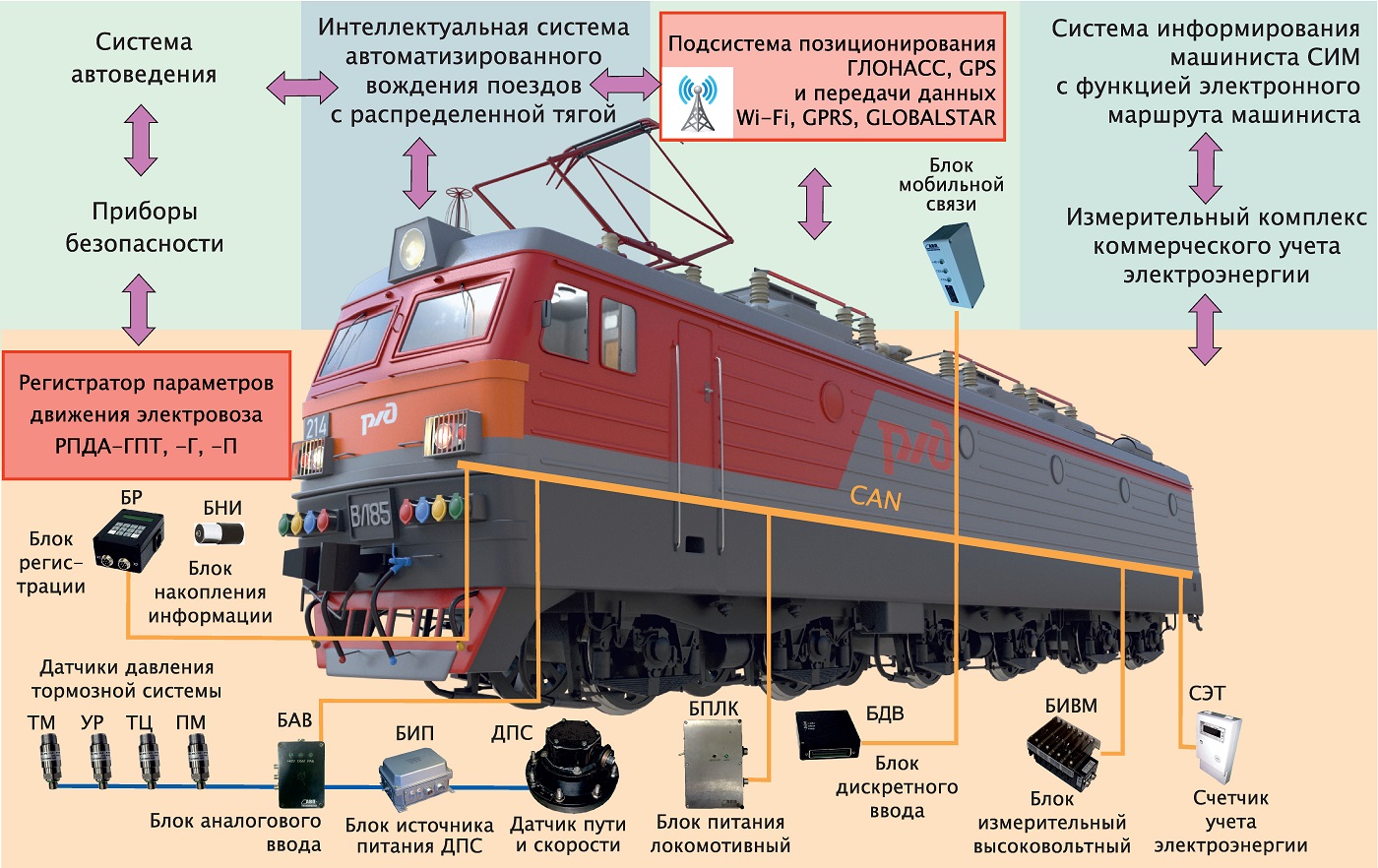 |
Event recorder for electrical freight locomotive RPDA-G
Event recorder for freight electrical locomotives RPDA-G is suitable for measuring and persistent recording of more that 40 main locomotive sensors and train parameters.
Part number:
Supplier:
AVP TechnologyDescription
Recorded data is used for express-analysis of locomotive operation details and its technical conditions. This data can be used for decisions about train timetable and loco service schedule. Two modifications of event recorders for freight electrical locomotives are developed and implemented – RPDA-G for DC locos and RPDA-GPT for AC locos.
Event recorder measures and stores following data
contact-wire voltage,
armature and excitation currents of traction motors,
voltage on traction motors,
loco speed,
passed way from the beginning of the trip,
cabin traffic light signals,
pneumatic brake system pressures,
safety switches states (high-speed switch, skidding relay etc.)
auto-driving system parameters.
All measured and stored data are referenced to current time and route position. That gives an opportunity to analyze collected data separately for different locomotive operation types, for different trains and for different route sections.
RPDA-G (RPDA-GPT) system uses special data storage to record and keep measured data. It is called “cartridge”, the capacity of cartridge is enough to store information of several operational days. System has open architecture and can be expanded by additional measurement equipment for more parameters recording.
Event recorder and auto-driving system
Auto-driving system for freight locomotives shares common data with event recorder RPDA. Those data is used for loco control calculation.
Also RPDA system with auto-driving system is a basis for computerized systems of traffic control and of locomotives and drivers operation.
Decoding recorded data
To decode the information stored on the cartridge is used a special software package – workplace ARM RPDA-G. That software helps to analyze the recorded data and also makes necessary report forms. Also it allows getting a rapid analysis of:
technical state of an electric locomotive
the results of the trip
That allows making a decision about regimes of train operation, train schedule, the work organization for service and repair locomotives.
Application effect components
1. Reduction the cost to decipher speedometer tapes (for depot).
2. Increase the accuracy of power consumption registration.
3. Enhancement of locomotive diagnostics, reduction the time and cost of troubleshooting and repair for electric locomotives.
4. Elimination of the facts and consequences of failures on the road, improvement the quality of maintenance of locomotives, increase the reliability of electric locomotives.
5. Assumption of timely and well-grounded decisions about freight traffic control and heavy hall train trains operation.
6. The ability to use decoded data of RPDA-G cartridges when dealing with offnominal situations.
Event recorder measures and stores following data
contact-wire voltage,
armature and excitation currents of traction motors,
voltage on traction motors,
loco speed,
passed way from the beginning of the trip,
cabin traffic light signals,
pneumatic brake system pressures,
safety switches states (high-speed switch, skidding relay etc.)
auto-driving system parameters.
All measured and stored data are referenced to current time and route position. That gives an opportunity to analyze collected data separately for different locomotive operation types, for different trains and for different route sections.
RPDA-G (RPDA-GPT) system uses special data storage to record and keep measured data. It is called “cartridge”, the capacity of cartridge is enough to store information of several operational days. System has open architecture and can be expanded by additional measurement equipment for more parameters recording.
Event recorder and auto-driving system
Auto-driving system for freight locomotives shares common data with event recorder RPDA. Those data is used for loco control calculation.
Also RPDA system with auto-driving system is a basis for computerized systems of traffic control and of locomotives and drivers operation.
Decoding recorded data
To decode the information stored on the cartridge is used a special software package – workplace ARM RPDA-G. That software helps to analyze the recorded data and also makes necessary report forms. Also it allows getting a rapid analysis of:
technical state of an electric locomotive
the results of the trip
That allows making a decision about regimes of train operation, train schedule, the work organization for service and repair locomotives.
Application effect components
1. Reduction the cost to decipher speedometer tapes (for depot).
2. Increase the accuracy of power consumption registration.
3. Enhancement of locomotive diagnostics, reduction the time and cost of troubleshooting and repair for electric locomotives.
4. Elimination of the facts and consequences of failures on the road, improvement the quality of maintenance of locomotives, increase the reliability of electric locomotives.
5. Assumption of timely and well-grounded decisions about freight traffic control and heavy hall train trains operation.
6. The ability to use decoded data of RPDA-G cartridges when dealing with offnominal situations.